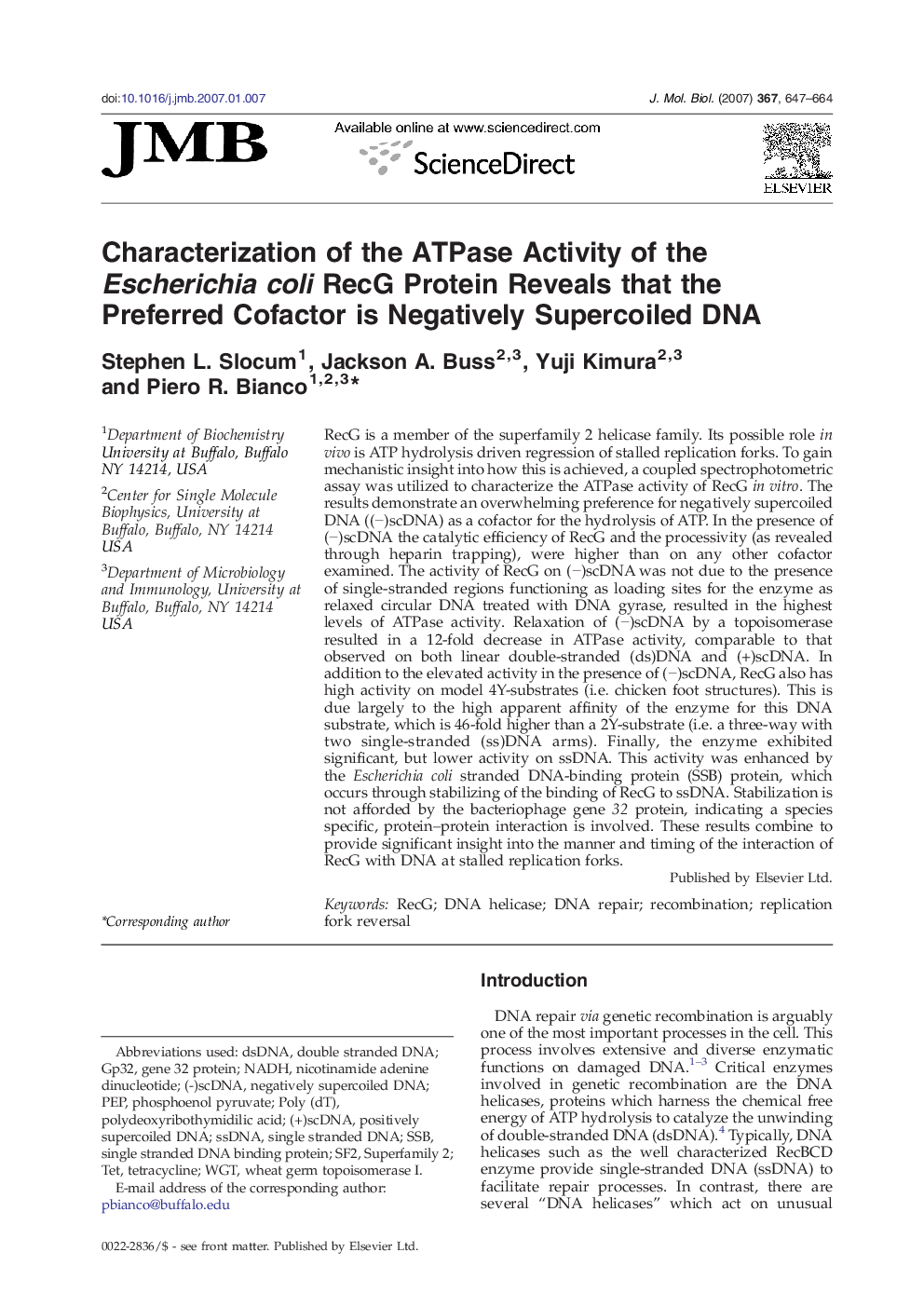| کد مقاله | کد نشریه | سال انتشار | مقاله انگلیسی | نسخه تمام متن |
|---|---|---|---|---|
| 2188292 | 1096161 | 2007 | 18 صفحه PDF | دانلود رایگان |

RecG is a member of the superfamily 2 helicase family. Its possible role in vivo is ATP hydrolysis driven regression of stalled replication forks. To gain mechanistic insight into how this is achieved, a coupled spectrophotometric assay was utilized to characterize the ATPase activity of RecG in vitro. The results demonstrate an overwhelming preference for negatively supercoiled DNA ((−)scDNA) as a cofactor for the hydrolysis of ATP. In the presence of (−)scDNA the catalytic efficiency of RecG and the processivity (as revealed through heparin trapping), were higher than on any other cofactor examined. The activity of RecG on (−)scDNA was not due to the presence of single-stranded regions functioning as loading sites for the enzyme as relaxed circular DNA treated with DNA gyrase, resulted in the highest levels of ATPase activity. Relaxation of (−)scDNA by a topoisomerase resulted in a 12-fold decrease in ATPase activity, comparable to that observed on both linear double-stranded (ds)DNA and (+)scDNA. In addition to the elevated activity in the presence of (−)scDNA, RecG also has high activity on model 4Y-substrates (i.e. chicken foot structures). This is due largely to the high apparent affinity of the enzyme for this DNA substrate, which is 46-fold higher than a 2Y-substrate (i.e. a three-way with two single-stranded (ss)DNA arms). Finally, the enzyme exhibited significant, but lower activity on ssDNA. This activity was enhanced by the Escherichia coli stranded DNA-binding protein (SSB) protein, which occurs through stabilizing of the binding of RecG to ssDNA. Stabilization is not afforded by the bacteriophage gene 32 protein, indicating a species specific, protein–protein interaction is involved. These results combine to provide significant insight into the manner and timing of the interaction of RecG with DNA at stalled replication forks.
Journal: Journal of Molecular Biology - Volume 367, Issue 3, 30 March 2007, Pages 647–664